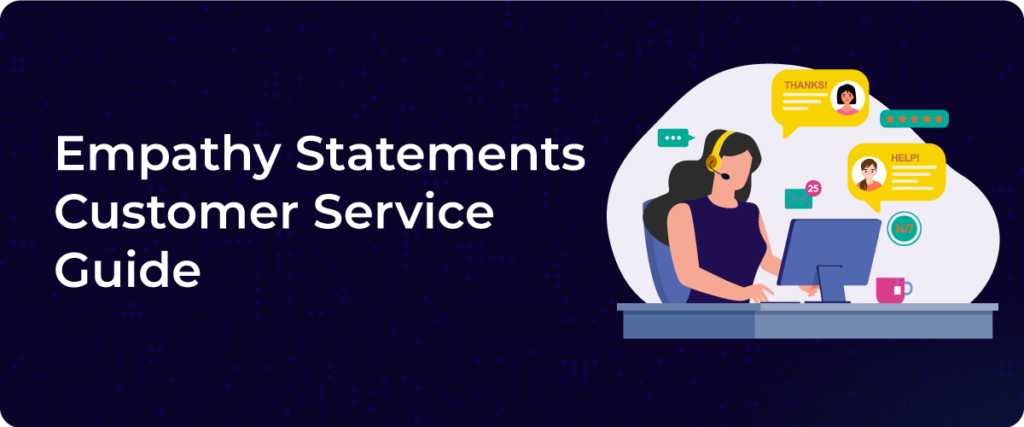Every customer interaction holds the potential to strengthen or weaken a company’s relationship with its audience. Supervisor escalations play a pivotal role in bridging the gap between customer expectations and service delivery.
According to a recent study, 70% of customers who experience unresolved issues during their first interaction are likely to escalate their concerns to a supervisor. This highlights how crucial it is for businesses to handle escalation call effectively and ensure customer satisfaction.
Table of Contents
- What is a Supervisor Escalation?
- Why Do Supervisor Escalations Matter in Call Centers?
- How Will an Agent Handle Escalations?
- What is the Reason for Escalation?
- How Can Organizations Handle Supervisor Escalations?
- What is Escalation Management?
- Why is Escalation Management Important?
- Challenges in Escalation Management
- The Best Practices in Customer Escalation Management
- Escalation Management Metrics: What to Measure & Why
- Conclusion
This comprehensive guide explores the nuances of supervisor escalations, providing actionable insights and strategies for businesses to excel in escalation management.
What is a Supervisor Escalation?
A supervisor escalation occurs when a customer request or complaint is passed from a front-line agent to a higher authority, typically due to the complexity or sensitivity of the issue.
These escalations often signify moments where stakes are high—customer retention, brand image, or service reputation can hinge on the resolution.
Why Do Supervisor Escalations Matter in Call Centers?
Supervisor escalations serve as a barometer for customer satisfaction and agent efficiency. They provide valuable insights into gaps in training, resources, or processes within an organization. When managed effectively, escalations can:
- Resolve complex issues promptly.
- Strengthen customer trust and loyalty.
- Reduce future escalations by addressing systemic problems.
How Will an Agent Handle Escalations?
Handling escalations requires a blend of empathy, authority, and problem-solving skills. Here’s how to do it effectively:
1. Stay Calm and Professional
- The first step in managing an escalation is for the agent to remain calm and composed, even if the customer is agitated.
- Maintaining a steady tone and professional demeanor helps de-escalate the tension.
- Example: “I understand your frustration, and I’m here to help resolve this issue for you.”
2. Actively Listen to the Customer
- Agents should allow the customer to explain their concerns fully without interrupting.
- Active listening shows empathy and assures the customer that their issue is being taken seriously.
- Tips for active listening:
- Nod or verbally acknowledge their points.
- Summarize their concerns to confirm understanding.
3. Acknowledge the Problem
- Validation is key to calming an upset customer.
- Acknowledge their feelings and the issue at hand.
- Example: “I can see how this situation has caused inconvenience, and I apologize for that. Let’s work together to resolve it.”
What is the Reason for Escalation?
Understanding the root causes of escalations can help businesses preempt them. Common reasons include:
- Agent Limitations: Inadequate knowledge or authority to resolve complex issues.
- Policy Restrictions: Rigid company policies that frustrate customers.
- Unmet Expectations: Customers feel their needs were ignored or undervalued.
- Technical Failures: Issues with service or product functionality.
- Miscommunication: Poor communication leads to misunderstandings.
How Can Organizations Handle Supervisor Escalations?
Organizations can adopt these strategies to manage supervisor escalations:
- Train Supervisors to Stay Calm Under Pressure: Equip them with communication and conflict-resolution skills.
- Create Clear Escalation Paths: Define when and how to escalate calls to ensure efficiency.
- Leverage Technology: Use tools like ConvoZen.AI to monitor escalation trends and provide actionable insights.
- Empower Agents: Provide agents with the authority to resolve common issues without escalating unnecessarily.
What is Escalation Management?
Escalation management is the systematic handling of customer escalations to resolve issues effectively and prevent future occurrences. This involves:
- Defining escalation paths.
- Documenting cases.
- Training staff on best practices.
Why is Escalation Management Important?
Without proper escalation management, businesses risk dissatisfied customers, inefficiencies, and potential loss of revenue. Here’s a detailed look at why escalation management is vital for organizations:
1. Improves Customer Satisfaction (CSAT)
- Effective escalation management directly impacts how customers perceive a company’s service.
- When escalations are handled quickly and effectively, customers feel valued and reassured, even during challenging situations.
- Why It Matters:
- A swift resolution prevents customer frustration.
- Clear communication throughout the escalation process builds trust and loyalty.
2. Retains Customer Loyalty
- Customers are more likely to remain loyal to businesses that address their concerns efficiently.
- Even when initial interactions fail, a well-managed escalation can recover a dissatisfied customer.
- Why It Matters:
- Retaining an existing customer is more cost-effective than acquiring a new one.
- Escalation management turns negative experiences into positive outcomes.
3. Addresses Complex Issues Effectively
- Not all customer issues can be resolved by front-line agents.
- Escalation management ensures that these complex or sensitive concerns are routed to the right person or team with the expertise and authority to resolve them.
- Why It Matters:
- Prevents unnecessary delays in resolution.
- Ensures customers receive accurate and effective solutions.
The Best Practices in Customer Escalation Management
Here are the best practices in customer escalation management:
1. Set Up Corresponding Escalation Paths for SLA Breaches
- Predefined escalation paths prevent delays and ensure accountability when SLAs are not met.
To Implement:
- Create an automated system that triggers escalations when SLAs are breached.
- Assign escalation paths based on issue type, severity, and required expertise.
- Notify stakeholders at each stage of the escalation process.
2. Conduct Root Cause Analysis of Escalated Issues
- It’s important to understand the underlying causes of escalations to helps prevent recurring problems.
To Implement:
- Analyze escalation trends to identify systemic issues.
- Use tools like ConvoZen.AI to track patterns and generate actionable insights.
- Collaborate across teams to implement long-term solutions.
3. Train Agents to Be Empathetic
- Empathy is critical in de-escalating tense situations and ensuring customer satisfaction.
To Implement:
- Provide training sessions on active listening and emotional intelligence.
- Use role-playing scenarios to help agents practice handling challenging interactions.
- Encourage agents to validate customer concerns before offering solutions.
4. Keep Customers in the Loop
- Transparent communication reassures customers that their concerns are being addressed.
To Implement:
- Send regular updates about the status of the escalation.
- Set realistic expectations for resolution timelines.
- Use automated notifications to keep customers informed at every stage.
5. Empower Agents with the Right Tools
- Agents need access to information, authority, and resources to resolve issues effectively.
To Implement:
- Train & coach agents with knowledge bases and AI-driven tools like ConvoZen.AI.
- Provide them with access to real-time data and customer history.
- Empower them to make decisions within defined limits without requiring supervisor approval.
Escalation Management Metrics: What to Measure & Why
To measure the success of your escalation processes and identify areas for improvement, it’s important to track key metrics.
Here are the most important escalation management metrics to measure and why they matter:
1. Escalation Rate
- What to Measure
- The percentage of customer interactions that are escalated to supervisors or higher levels of authority.
- Why It Matters
- High escalation rates may indicate gaps in agent training, insufficient empowerment, or inefficient processes.
- It provides insight into how often agents are unable to resolve issues independently.
2. First Call Resolution (FCR) Post-Escalations
- What to Measure
- FCR is the percentage of escalated cases that are resolved during the first interaction after escalation.
- Why It Matters
- Indicates how effectively supervisors or higher-level staff resolve escalated issues.
- Helps identify whether escalations are improving resolution speed and quality.
3. Resolution Time Post-Escalation
- What to Measure
- The average time it takes to resolve a customer issue after it has been escalated.
- Why It Matters
- A long resolution time could signal inefficiencies in the escalation process.
- Fast resolution times improve customer satisfaction and reduce repeat escalations.
4. Customer Satisfaction (CSAT) After Escalation
- What to Measure:
- The customer satisfaction score for interactions that were escalated, is typically collected through post-interaction surveys.
- Why It Matters:
- Tracks how well escalations meet customer expectations.
- Highlights whether escalation handling improves or worsens customer sentiment
Challenges in Escalation Management
Below are the most common challenges organizations face in escalation management and strategies to overcome them:
- The high volume of escalations.
- Lack of clear escalation paths.
- Inadequate training for agents and supervisors.
- Difficulty in prioritizing escalations.
- How to Set Up an Escalation Management Process
- Define roles and responsibilities.
- Establish escalation triggers.
- Create escalation paths and timelines.
- Use technology to track and analyze escalations.
Conclusion
Supervisor escalations, while challenging, present a golden opportunity to enhance customer trust and refine internal processes. By implementing structured escalation management strategies and leveraging advanced tools like ConvoZen.AI, businesses can ensure seamless customer experiences while maintaining operational efficiency.
Ready to revolutionize your escalation management?
Explore ConvoZen.AI’s Solutions, and empower your team with tools that make a difference.
FAQs
Communication skills.
Conflict resolution.
Analytical thinking.
Customer empathy.
Technical proficiency.
Functional Escalations: When a specialized team is needed to address the issue.
Hierarchical Escalations: When the issue is passed to higher management.
Automatic Escalations: Triggered by predefined conditions, such as SLA breaches.
Regular training sessions.
Use feedback to refine processes.
Invest in tools like ConvoZen.AI for actionable insights.
Foster a culture of continuous improvement.
When you need to escalate a call, follow these steps:
Acknowledge the Customer’s Frustration: “I understand how frustrating this must be for you.”
Clarify the Problem: Restate the issue to ensure you and the customer are on the same page.
Promise Swift Action: Provide a realistic timeline for resolution.
Loop in the Right Team: Involve specialists or managers as needed.
Follow-up: Confirm that the resolution meets the customer’s expectations.
A high call escalation rate indicates deeper systemic issues. Addressing these involves:
Root Cause Analysis: Identify recurring problems in customer interactions.
Training Programs: Enhance agent knowledge and skills.
Technology Integration: Automate simple processes to free up agents for more complex cases.
Customer Feedback Loops: Gather insights directly from customers to refine your approach.
Handling escalations systematically is key to success. A typical escalation process for supervisors includes:
Receiving the Escalation
Assessing the Issue
Resolving the Concern
Documenting the Case
Providing Feedback


